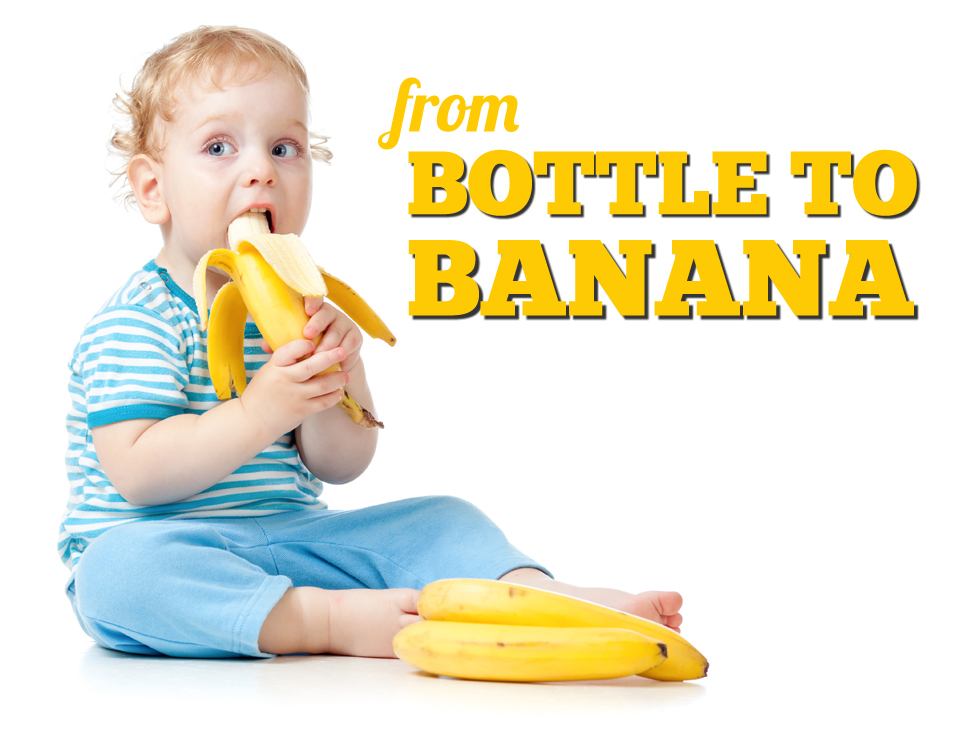Baby-Led Weaning: How Does It Help Your Infant Transition to Whole Foods?

To mush or not to mush? A growing chorus of moms and dads are asking this question. More specifically, now that it’s time to introduce food into your infant’s diet, what’s the best way to do that?
Baby-led weaning, or BLW, is a feeding method that is growing in popularity in the United States, thanks to the book “Baby-Led Weaning: The Essential Guide to Introducing Solid Foods and Helping Your Baby to Grow Up a Happy and Confident Eater.” BLW doesn’t involve jars of pureed foods, but rather whole foods; that is, food that has been processed or refined as little as possible and is free from additives or other artificial ingredients. BLW also means you don’t spoon-feed your baby. From the start, the baby feeds him or herself.
Jody Wells, MS RD LD, a registered dietician at Arkansas Children’s Hospital and nutrition educator at Birth by Design, helps parse through the pieces of this new phenomenon that has parents talking.
How do parents know if baby-led weaning is right for them?
Jody Wells: I would recommend BLW for healthy 6-month-old infants with no feeding difficulties. The parents should be very attentive and able to be present throughout an entire meal. The whole point, from my perspective, is helping your baby develop a relationship with real food. That’s a major component of BLW.
It’s not just skipping the jar of baby food and going straight to what the rest of the family is eating. There’s a slow introduction of infant-appropriate food. The baby should be eating a basic food—a banana, as opposed to your baby eating a pureed mix of banana and strawberry from the jar. The baby doesn’t recognize that as banana.
It’s not complicated, but you have to be willing to make sure your baby is eating whole foods. Instead of a chicken nugget, the baby would eat boiled chicken.
What are the risks involved with BLW?
Wells: There are three main risks from a dietetic standpoint:
1) Choking. Parents should become familiar with the difference between gagging and choking and how to react to each of them. Gagging can be completely normal. That’s how babies move food out of mouth that they don’t want. Choking, on the other hand, is very dangerous and we need to prevent that at all costs. And I would instruct any parent, not just baby-led weaning parents, to know infant CPR.
2) Inadequate vitamin and mineral intake. Parents who do BLW are usually parents who exclusively breastfeed, and there will likely be some nutrient deficiencies. So, there are some vitamin supplements the baby will need, specifically iron, zinc and vitamin D.
3) High sodium intake. If we’re doing baby led weaning and we’re feeding baby what the rest of the family is eating, it’s very likely that we’re seasoning foods and that’s a big no-no for BLW. We don’t want to season or add salt to anything. Also, do not add sugar.
But the baby’s probably not eating much at six months, right?
Wells: Yes, that’s right. When we’re talking about a 6-month to a 12-month-old baby, we’re introducing foods so they develop oral motor skills and learn about the point of food. At six months, the baby is likely not swallowing, just playing with it in their mouth and spitting it out, and that’s ok. All of a baby’s calories and nutrients still need to come from fluid, meaning breast milk or formula, until they are 1 year old.
And this will be difficult for many parents, but the baby feeds him or herself. When they’re done, they’re done. This teaches the baby to recognize those signals that tell them when they’re full.
When it comes to introducing new foods to baby, what is the playbook?
Wells: To help determine any allergies, the American Academy of Pediatrics strongly recommends that parents introduce one new food at a time and wait three to four days before introducing another. After baby has his or her first birthday, parents need to make sure he or she is getting a protein, carb, starch, and fat at mealtime.
I suggest parents consult a dietician if they have questions about what their baby is eating. Your pediatrician can recommend one. Mothers who use Women, Infants and Children (WIC), have access to a dietician until their child is 5 years of age.
What’s on the menu?
Remember, always give baby the breast or bottle first, then food!
| Vegetables: | Steam or boil until soft (should be able to smash between your fingers). |
| Fruits: | Cut into wedges with skin on for better grip. For bananas, cut in half and then remove a little skin to expose fruit. |
| Meat: | Large strips (likely won’t be able to bite anything off and will just get the juices out of it). |
| Bread: | Toast cut into strips (untoasted gets too mushy and sticks to roof of mouth). |
